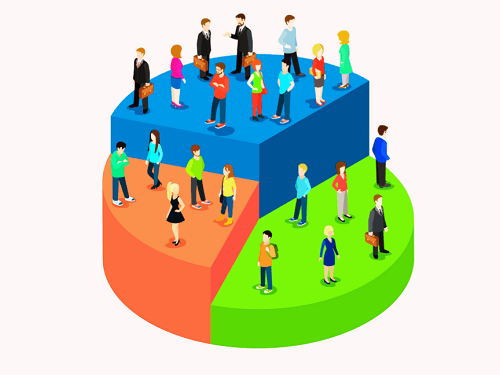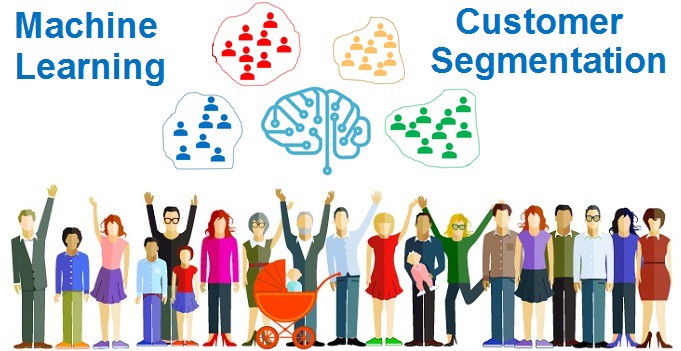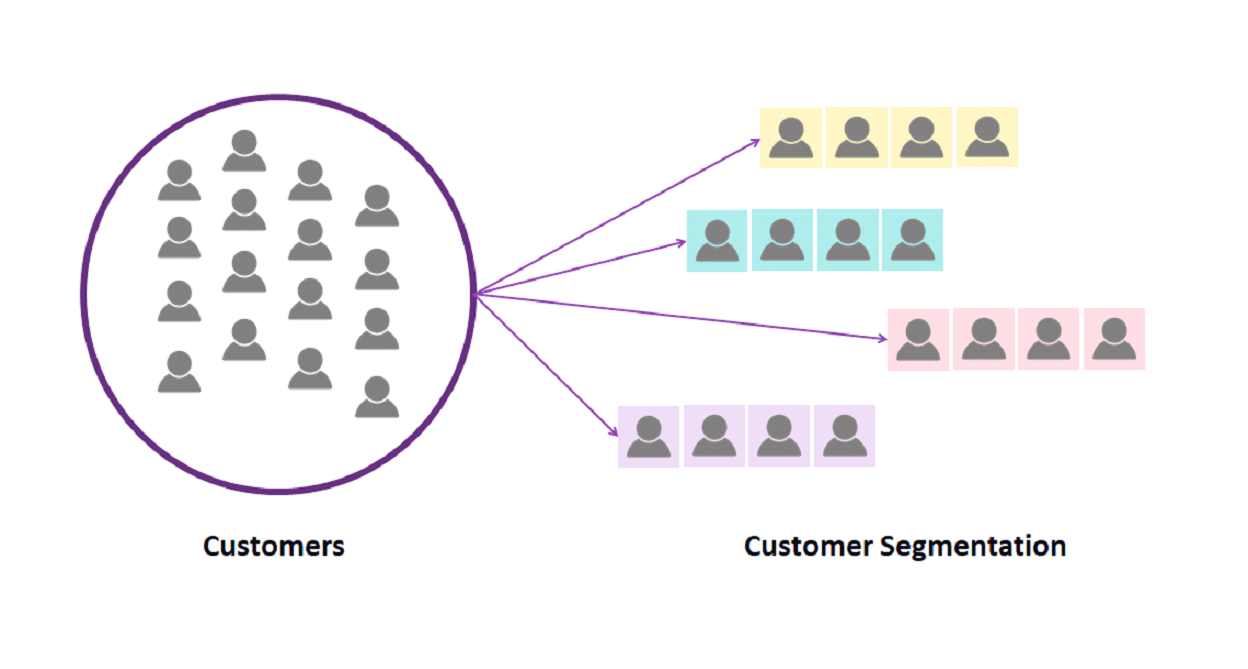Machine Learning for Customer Segmentation

Customer segmentation is the process of dividing a customer base into groups of individuals with similar characteristics. This can be done using a variety of factors, such as demographics, purchase history, and online behavior. Customer segmentation is used to improve marketing and sales efforts by targeting specific groups of customers with the most relevant offers and messages.
Machine learning (ML) can be used to automate the customer segmentation process, making it more efficient and effective. ML algorithms can learn to identify the most important factors for segmenting customers, and they can be continuously updated as new data becomes available. This allows businesses to stay up-to-date on the latest trends and changes in customer behavior, and to make sure that they are always targeting the most profitable customers.
There are a number of different ML algorithms that can be used for customer segmentation. Some of the most popular algorithms include:

- K-means clustering is a simple but effective algorithm that can be used to group data points into k clusters. K-means clustering works by iteratively assigning data points to clusters until the clusters are no longer changing.
- Decision trees are a type of supervised learning algorithm that can be used to build models that predict the probability of an event occurring. Decision trees work by splitting the data into smaller and smaller groups until each group is homogeneous.
- Random forests are a type of ensemble learning algorithm that combines the predictions of multiple decision trees to improve accuracy. Random forests work by building multiple decision trees on different subsets of the data, and then taking the average of the predictions.
ML algorithms can be used to segment customers on a variety of different dimensions, including:
- Demographics: Age, gender, income, education, etc.
- Purchase history: Products purchased, frequency of purchases, amount spent, etc.
- Online behavior: Websites visited, pages viewed, time spent on site, etc.

By segmenting customers on these dimensions, businesses can gain a better understanding of their customers' needs and preferences. This information can be used to develop more targeted marketing and sales campaigns, and to improve customer service.
In addition to improving marketing and sales, ML-based customer segmentation can also be used for a variety of other purposes, such as:
- Personalization: Businesses can use customer segmentation to provide personalized experiences for each customer. This can include offering personalized product recommendations, tailored content, and special offers.
- Customer retention: By understanding the needs and preferences of different customer segments, businesses can develop strategies to retain their customers. This can include providing better service, offering loyalty programs, and creating a positive customer experience.
- Customer acquisition: Businesses can use customer segmentation to identify new customers who are likely to be interested in their products or services. This can be done by targeting customers who have similar characteristics to existing customers, or by targeting customers who are searching for products or services that the business offers.

ML-based customer segmentation is a powerful tool that can help businesses improve their marketing, sales, and customer service. By understanding their customers' needs and preferences, businesses can better serve their customers and grow their business.
How to use ML for customer segmentation
There are a few steps involved in using ML for customer segmentation:

- Gather data. The first step is to gather data about your customers. This data can include demographics, purchase history, online behavior, and other information.
- Prepare the data. Once you have gathered the data, you need to prepare it for analysis. This may involve cleaning the data, removing duplicate records, and dealing with missing values.
- Choose an ML algorithm. There are a number of different ML algorithms that can be used for customer segmentation. The best algorithm for your business will depend on the type of data you have and the goals you want to achieve.
- Train the model. Once you have chosen an ML algorithm, you need to train the model on your data. This involves feeding the data into the algorithm and letting it learn to identify the most important features for segmenting your customers.
- Test the model. Once the model is trained, you need to test it to see how well it performs. This can be done by dividing your data into a training set and a test set. The model is trained on the training set, and then its performance is evaluated on the test set.
- Deploy the model. Once the model is tested and validated, you can deploy it to production. This means making the model available to your business so that it can be used to segment customers.
Benefits of using ML for customer segmentation
There are a number of benefits to using ML for customer segmentation, including:


- Improved marketing and sales: ML-based customer segmentation can help businesses improve their marketing and sales efforts by targeting specific groups of customers with the most relevant offers
Post a Comment